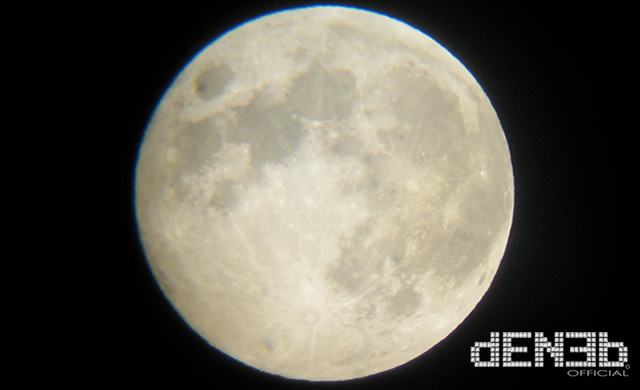
Luna Piena – Full Moon – Credit: DENEB Official ©
La luna è una vista familiare nel nostro cielo, illumina le notti buie e ci ricorda l’esplorazione dello spazio, passato e presente. Ma la prossima “Super Luna” di Lunedi 14 novembre 2016 sarà soprattutto “super”, perché sarà la Luna piena più vicina alla Terra dal 1948. Non vedremo un altra super luna di questo genere fino al 2034.
L’orbita della Luna intorno alla Terra è leggermente ellittica così a volte si trova ad essere più vicina, e a volte più lontana. Quando la luna è piena e il suo passaggio si trova ad essere più vicino alla Terra è conosciuto come “Super Luna” Al Perigeo, ossia il punto in cui la Luna è più vicina alla Terra, questa può essere fino al 14 per cento più vicina alla Terra rispetto a quando con il termine apogeo,si trova è più lontana dal nostro pianeta. La luna piena sembrerà molto più grande di diametro perché è brillerà del 30 per cento in più rispetto al chiaro di luna sulla Terra. Non perdete questo spettacolo che inizierà subito dopo il tramonto di domani sera. Buona visione!
Credit: NASA’s Goddard Space Flight Center
The moon is a familiar sight in our sky, brightening dark nights and reminding us of space exploration, past and present. But the upcoming supermoon — on Monday, Nov. 14 — will be especially “super” because it’s the closest full moon to Earth since 1948. We won’t see another supermoon like this until 2034.
The moon’s orbit around Earth is slightly elliptical so sometimes it is closer and sometimes it’s farther away. When the moon is full as it makes its closest pass to Earth it is known as a supermoon. At perigree — the point at which the moon is closest to Earth — the moon can be as much as 14 percent closer to Earth than at apogee, when the moon is farthest from our planet. The full moon appears that much larger in diameter and because it is larger shines 30 percent more moonlight onto the Earth.
Source/Continue reading → NASA.gov
#Supermoon and Space Station #ISS https://t.co/3Vii5mLrzE pic.twitter.com/B9CPfSsUJy
— DENEB Official © (@denebofficial) 14 novembre 2016





















